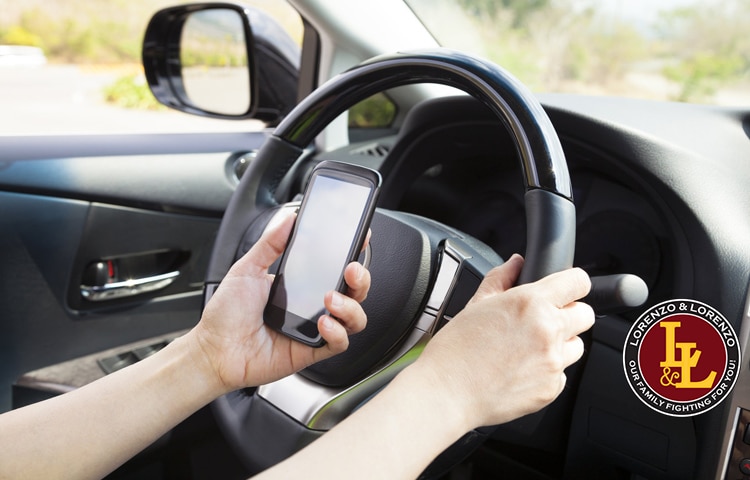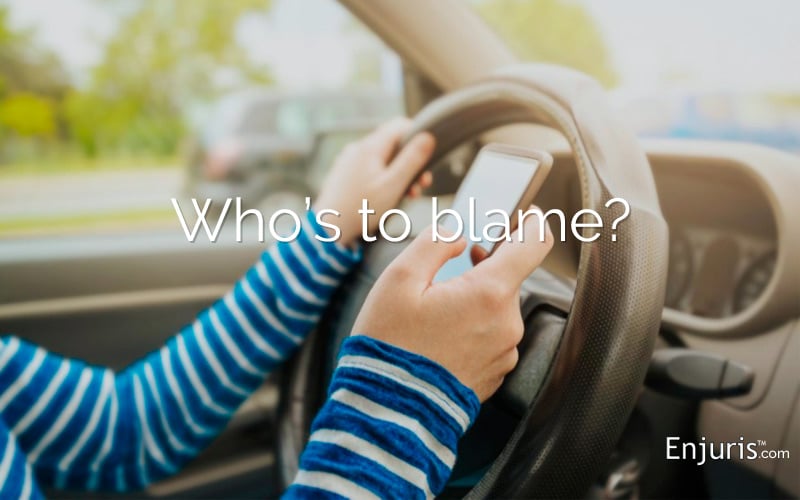Driving is such a normal part of many of our lives that we tend to feel like we can do it on autopilot. For many, this develops into a false confidence that we’re capable of driving while doing something else.
Enter distracted driving—a continually growing cause of motor vehicle injuries and deaths.
In fact, distracted driving was the cause of the accident that happened in November 2020 on Gandy Bridge in Tampa, Florida.
Distracted driving accident on Gandy Bridge
According to reports, the driver, a Brandon resident, was traveling westward on the inside lane of the Gandy Bridge when she glanced down at her GPS.
When she looked up, she saw 3 vehicles that were stopped. A police car was on the shoulder to her left, behind a car that was parked on the shoulder but partially in the travel lane. Another vehicle was parked on the shoulder on her right.
She swerved right to miss the parked cars but ended up hitting the police car, then rolled her vehicle over and crashed into the parked vehicle that was on the right shoulder.
Thankfully, the injuries reported were only minor.
Dangers of distracted driving
Smartphones have become our 1-stop shop for any sort of communication, information and entertainment. Whether we go looking for something or are prompted by a notification bell, our heads are now down in our phones, leaving us distracted. The problem comes when we do this even when we’re driving.
Distracted driving, according to the National Highway Traffic Safety Administration, accounted for more than 9 percent of traffic accident deaths in the United States during the past 7 years.
As smartphones have increasingly become the norm and a source for most of the information we consume—including GPS directions—distracted driving accidents continue to climb.
In 2018, more than 2,800 people died in distracted driving-related vehicle accidents. Injuries from accidents related to distracted driving were around 400,000 for the same year.
It will probably come as no shock that 16 to 24-year-olds have the highest cell phone use of any age group.
Use, of course, is not the issue. It’s choosing when to use this technology that’s the problem. When cell phone use becomes a distraction, it can turn a seemingly harmless, normal activity like driving into a life-changing accident that causes injury or death.
Enjuris asked students across the US: Do you think that cell phone manufacturers should be held responsible for distracted driving?
How to file a lawsuit
If you or someone you know was injured in a distracted driving accident, your personal injury attorney will have to show that the driver intentionally put other drivers at risk, meaning they violated their duty of care to other drivers.
The types of available compensation include:
- Lost income. Any and all wages that you missed out on, including sick time, vacation days, bonuses and benefits, might be compensable.
- Medical costs. This includes physical therapy and any other rehab, emergency room visits and hospital stays.
- Property damage. Not only does this include damage to your vehicle, but also any other property of value, like a computer or cell phone, that may have been damaged in the accident as well.
- Out-of-pocket medical expenses. Were there other expenses that came up as a result of the accident? Maybe you had to rent a car or needed medical equipment to assist in your recovery.
- Pain and suffering. What did you suffer or lose that one can’t put a price on? Amounts for punitive damages, such as suffering emotional distress or loss of marital intimacy, can be decided in court.








